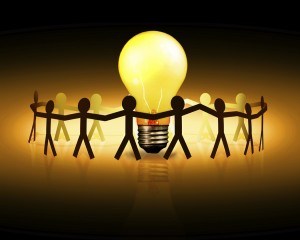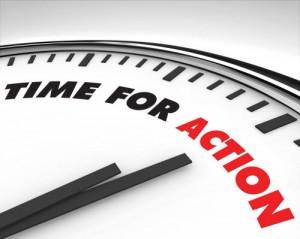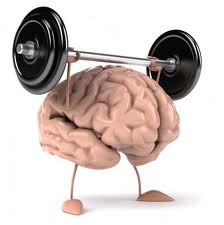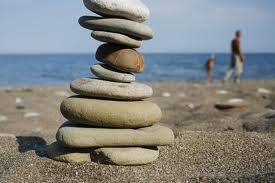Best time of the day for best brain power
We fluctuate over the course of a day.
Did you know that your brain obeys its own rhythm too? It’s based largely on your human clock, sleep pattern, exposure to light, and genetic makeup — and getting in a groove with its tempo can make you healthier, happier, and have more energy.
You can burn more calories from exercise, work more efficiently and improve concentration, and even have better sex by learning how to synch up to your circadian rhythm and brain’s power hours. Here’s your daily guide.
7 to 9 AM: Best for Passion

“The perfect moment for bonding with your spouse is right when you wake up” .
The reason:
Levels of oxytocin (aka the “love hormone”) are sky-high upon waking, making it the best time for intimacy of all kinds.
These are the hours to strengthen your relationship with the most important people in your life. Wake up feeling frisky and need more than just cuddling? Your husband’s brain is on nearly the same wavelength.
High morning oxytocin levels in men gradually decreased as the day wore on.
Tap into it: Make love or cuddle. Tell your partner how much you love him. Call your child at college (so long as it’s not the weekend!). Pen a thank-you note to a friend.
9 to 11 AM: Best for Creativity

Your brain now has moderate levels of the stress hormone cortisol, which in reasonable amounts can actually help your mind focus.
It’s present at any age:
College students are the quickest, mentally that is, in the morning. So for those students pursuing a physical or online college degree here, or elsewhere for that matter, should keep in mind that the brain is best utilized in the morning. Furthermore, retired adults were also mentally quick in the morning — but among older subjects, sharpness declined in the afternoon.
Because you’re primed for learning, take on tasks that require analysis and concentration. “From middle age on, you’re more alert early in the day,” . Schedule discussions that involve personal or family matters, as others will be sharp during these hours as well.
Tap into it: Develop a new idea. Write a presentation. Brainstorm solutions to challenges, large or small. Have an important convo with your doctor.
11 AM to 2 PM: Best for Tough Tasks

By now, levels of the sleep hormone melatonin have dipped sharply from their late evening and early morning peaks.
This means you’re more ready to take on a load of projects. The reaction time and the ability to accomplish several to-dos that are strong in the middle of the day.
Tear through that list — because of your mental quickness, this time of day is best for taking action.
One tip: Cross items off one at a time. Attempts to juggle tasks simultaneously put additional demands on your brain, making you more likely to lose concentration and make slip-ups.
Tap into it: dig through voice mails or e-mails. Give a presentation to a client or boss. Iron out a tough problem with your spouse.
2 to 3 PM: Best for a Break

To digest your lunch, your body draws blood away from your brain to your stomach. Aim to eat lunch closer to 2 PM, as the midday meal can make you wish there was a couch to crash on close by. Your body’s circadian rhythm (the biological “clock” that regulates sleep and wakefulness) is also in a brief down phase during this time, according to a Harvard study.
Steer clear of your workload and play around on Facebook or flip through magazines.
If you’re at work and need to fight off drowsiness, take a quick, brisk walk around the block or drink some water — both will get blood moving away from your belly and toward your head.
“Water increases vascular volume and circulation, promoting blood flow to your brain,” .
3 to 6 PM: Best for Collaboration

“The brain is pretty fatigued by now”. That doesn’t mean you’re stressed, however: Cortisol levels usually decline in women by late afternoon.
Although your brain is not as sharp as earlier, you’re more easygoing, so plan a low-pressure meeting for now. If you’ve already left work, pick an activity that is as different from your job as possible.
Exercise is a perfect one: Strength, manual dexterity, and other physical skills are at their strongest by evening, but if you work out too late, the residual adrenaline may interfere with sleep for some people.
A gym session right before dinner solves the problem.
Tap into it: Brainstorm with coworkers. Strength-train.
6 to 8 PM: Best for Personal Tasks

Between these hours, the brain enters something called “wake maintenance,” when its production of sleep-friendly melatonin is at an all-day low.
As a result, chances of getting tired now are next to none. Studies also show that your taste buds are lit up during these hours because of circadian variations in hormone levels.
Keep your energy up by exposing yourself to the last of the day’s serotonin-stimulating sunlight. Now may be a good time to walk yourself to the grocery store.
And because you’re now more alert but no longer at work, direct your renewed burst of mental energy toward your husband and kids and maybe some friends; you’re bound to be pretty engaging about now.
Tap into it: Run errands. Clean a long-overdue room in your house. Enjoy quality time with your family members. Whip up a delicious meal.
8 to 10 PM: Best for Relaxing

There’s an abrupt transition from being wide awake to feeling sleepy as melatonin levels rise quickly. Meanwhile, levels of serotonin, a neurotransmitter tied to perkiness, start to fade.
“Eighty percent of serotonin is stimulated from exposure to daylight, so now you’re slowing down,” .
Now’s the time to ease into relaxing, “mindless” activities (save the crossword puzzle for the morning). “By nightfall, when your brain is tired, this is a good way to bring yourself down, like walking a lap or two after a big workout,” says Naiman.
Tap into it: Unwind by watching a funny movie. Try a low-key, repetitive activity, such as knitting.
10 PM onward: Best for Snoozing

Your brain is looking to knit together all it learned today, which it does during sleep. Your top priority should be getting a full night’s rest.
Sleep can inspire insight: In one study, more than half of those taught a task thought of an easier way to do it after 8 hours of sleep.
Adjusting lighting can help: Dim the rooms you occupy after dinner to let your body know the day is ending. In a few hours, your brain will be ready to start all over again.
Whatever helps you get to sleep — and it may take adjustments over time — follow your routine consistently.
Just make sure you sign off early enough so you get the 7 to 9 hours of shut-eye recommended for optimal health and energy.





